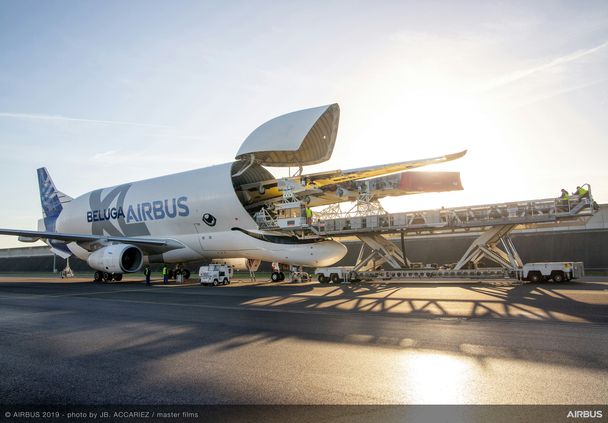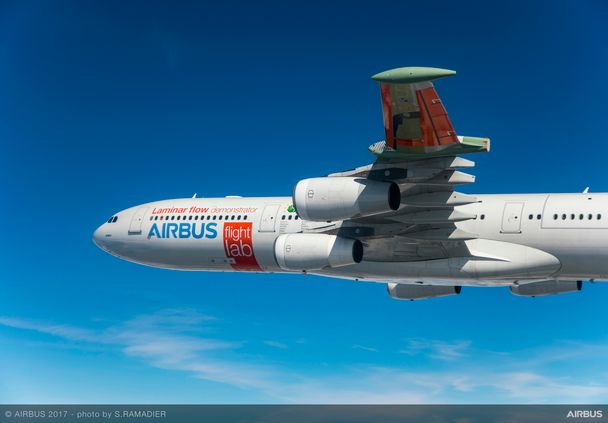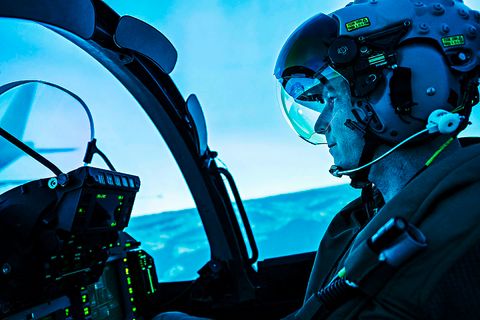How to Make a Wing

In the last episode, we looked at how wings work. But how does Airbus make them? Our Wing of Tomorrow research programme is examining the technologies and industrial systems that could help lift a new, low-carbon aircraft into the skies. But first, let’s take a look at how wings are manufactured today.
Of course, it’s Airbus’ passionate assembly workers who bolt our wings together. We’re exploring some 100 new technologies to assist them, and advance the way we design and manufacture wings. It’s our largest ongoing research project, and it’s called Wing of Tomorrow.
Wing of Tomorrow aims to mature a selection of disruptive approaches that could help bring a new, low-carbon aircraft into service. Some may even be applicable to current Airbus platforms.
But first, today. How does Airbus produce the wings that carry half of the world’s passengers?

Piecing the puzzle together
At Airbus, assembling and equipping wings is a little like a puzzle.
Take the A350. In common with all Airbus Commercial Aircraft programmes, the wings’ composite covers and other components such as spars and ribs are manufactured at multiple Airbus sites and in the supply chain. Operators then assemble the wings at our Broughton plant in the UK.

Each completed A350 wingset is flown by BelugaXL air transporter to Toulouse operating on a blend of 50% Sustainable Aviation Fuel (SAF), where it is joined to the centre wing box and fuselage during final assembly.
Before this production puzzle can be completed, a lot needs to happen. The process starts well upstream, with the Overall Aircraft Design. This determines the wing’s shape and characteristics, including flight controls and high lift systems.
A so-called ‘co-design’ phase then begins. A wing’s structural design is matured in parallel with the industrial system required to produce it.
Longer, leaner, lighter
In the future, wings will be produced with higher levels of automation. Using a process called ‘design for manufacture’, Airbus engineers will identify the best balance between manual and automated assembly, ensuring the wings are produced right the first time, every time, at the right cost.
The next generation of wings will be longer, leaner and lighter. When combined, these characteristics help an aircraft attain lift using less fuel, which in turn produces fewer CO₂ emissions.
This change in wing design must be met with a change in wing production. Airbus’ industrial system needs to be equipped to cost-effectively produce such a lightweight wing at volume and pace. The shift requires a radical rethink, and that’s where Wing of Tomorrow comes in.

Its purpose is to prepare not only the technologies needed for the next generation of aircraft; but employees, the supply chain, the industrial system, and the company’s physical and digital capabilities, too.
All will work together to bring the agility required to scale up production at speed, while considering the effect on the operators who make the wings every day.
Shorter production cycles
Wing of Tomorrow is leading Airbus into a new age of industrial capability, as a testbed for new manufacturing and automation techniques that bring efficiency and ergonomic improvements together.
For example, production could see the introduction of multi-product moving pulse lines, akin to an automotive facility. This would allow Airbus to work on multiple parts of the wing concurrently, and enable shorter production cycles for faster assembly. Drilling automation for instance not only shortens lead times; it frees up skilled operators for higher value-added tasks.
Airbus is also using digital modelling to inform the design of future wing factories, making the best use of such new technologies to optimise production time. This digital model of operations, known as the ‘digital twin’, helps Airbus to assess the impact of each assembly process in terms of most efficient use of materials, reduction of waste and carbon emissions.
More in the next episode about what the Wing of Tomorrow could look like, and how Airbus is borrowing from nature to help with the heavy lifting. Stay tuned!
Dawn of the demos
Assembled at the Advanced Manufacturing Research Centre (AMRC) in Broughton, UK, three full-sized Wing demonstrators will be used to assess different aspects of building next-generation wings.
The demonstrators are all made from lightweight composites and have been produced in collaboration with 40 worldwide partners, with an overall aim of identifying any bottlenecks that might prevent the technologies they feature being used in future generations of aircraft.
The three full-size demonstrators are:
- Static wing demonstrator - used to test the structural capabilities of new designs and materials.
- Fully-equipped demonstrator - used to test installation technologies and novel approaches to equipping the next generation of wings with systems.
- Run@rate demonstrator - used to test Airbus’ industrial capability and automation technologies to assess how to build wings at scale and pace.



